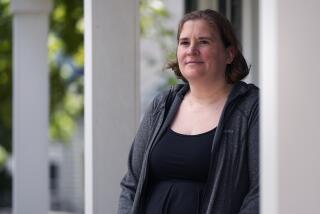Simi Trustees Discuss Bus Fee Elimination
- Share via
SIMI VALLEY — Revisiting an unpopular budget-cutting decision of two years ago, Simi Valley trustees Tuesday discussed dropping the school district’s bus transportation fee.
“Financially we’re in a better place now, and this [fee] has always been a great hardship to parents,” said trustee Debbie Sandland, the lone dissenter when the policy was enacted. “I think it never should have been implemented in the first place.”
Faced with a looming budget deficit, trustees voted in 1994 to charge parents up to $190 annually for their children to ride yellow school buses between home and school.
The idea was to raise $190,000 annually for the cash-strapped district. But parents were incensed by the fee and the anticipated ridership never met expectations. The busing program cost $200,000 to run last school year, and fees from 809 student riders brought in only $87,211.
*
With a healthy $91-million budget this year, Sandland asked for an evaluation of the transportation fee.
The evaluation does not necessarily mean trustees will change the existing system, said board President Judy Barry, who said she does not want to raise parents’ hopes prematurely.
“I don’t know that any action will be taken,” she said.
Within the next year or so, the busing situation could change dramatically, she added. “We’re going to be in the middle of boundary changes next year. We may open a closed school. There’s so many things that are involved in this.”
If boundaries are changed or a school reopened, the demand for busing may drop, she said.
If trustees vote on the fees later, officials say they will have at least three options:
* Keeping the busing program in tact with parents picking up the tab.
* Abandoning all home-to-school busing for students not involved in special education programs, at an annual district savings of $200,000
* Keeping the current busing program going at the district’s expense.
The last is the most costly option, because no-cost transportation would doubtless attract more customers.
*
“There are going to be a lot more people on the bus if it’s free,” said Dave Kanthak, assistant superintendent for business services.
At minimum, Kanthak said, the third option would carry a one-time cost to the district of $700,000 for seven new 60-student buses. Annual maintenance and driver salaries for those vehicles could run between $70,000 and $100,000.
Despite the cost, providing busing for students who do not live within walking distance of their neighborhood schools is an appealing notion, particularly for trustees who were never quite comfortable with the transportation charge.
More to Read
Sign up for Essential California
The most important California stories and recommendations in your inbox every morning.
You may occasionally receive promotional content from the Los Angeles Times.













